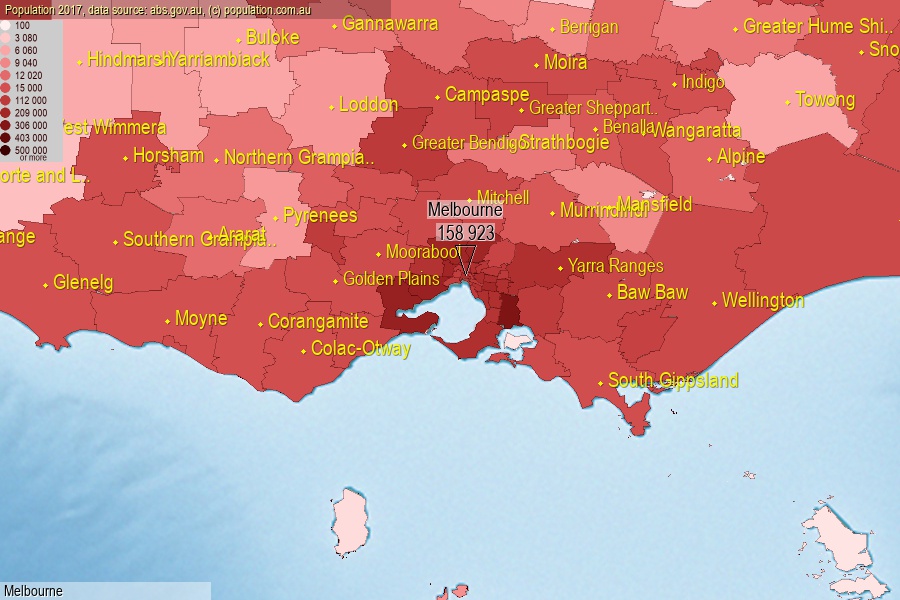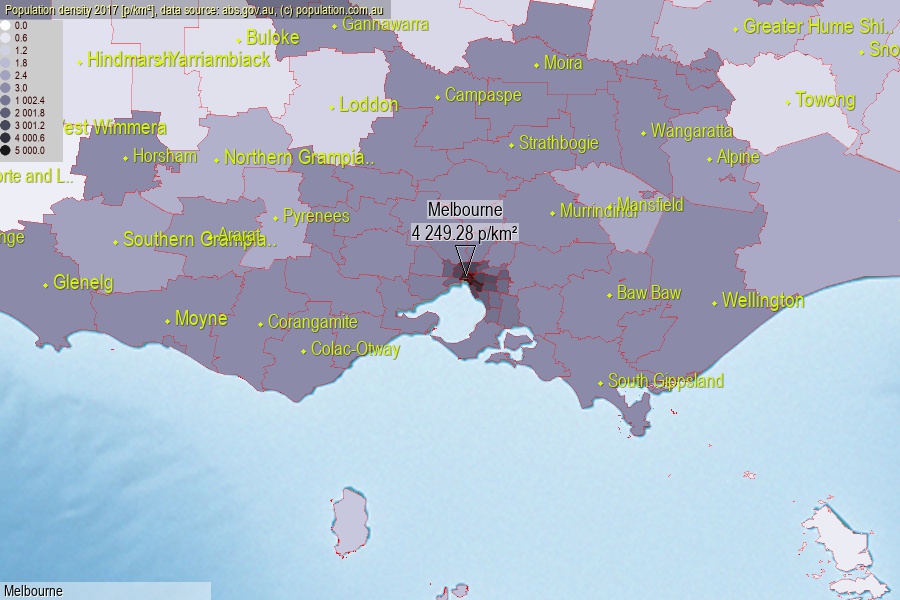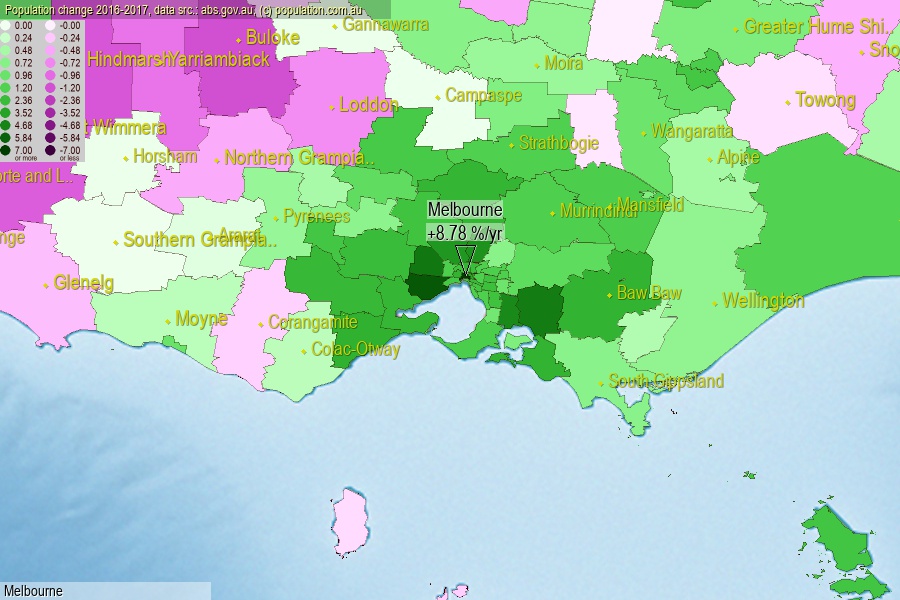 population.com.au
population.com.auLast official estimated population of Melbourne City (as Local Government Area) was 158 923 people (on 2017-06-30)[2]. This was 0.64% of total Australian population and 2.472% of VIC population. Area of Melbourne is 37.40 km², in this year population density was 4 249.28 p/km² . If population growth rate would be same as in period 2016-2017 (+8.78%/yr), Melbourne population in 2025 would be 311 583. [0]



Click to enlarge. Melbourne is located in the center of the images.
Population [people], population density [p./km²] and population change [%/year] [2]
[1996-2001] +6.88 %/Y
[2001-2002] +9.06 %/Y
[2002-2003] +9.17 %/Y
[2003-2004] +8.30 %/Y
[2004-2005] +6.45 %/Y
[2005-2006] +5.42 %/Y
[2006-2007] +6.50 %/Y
[2007-2008] +5.35 %/Y
[2008-2009] +4.79 %/Y
[2009-2010] +3.58 %/Y
[2010-2011] +2.68 %/Y
[2011-2012] +7.32 %/Y
[2012-2013] +10.35 %/Y
[2013-2014] +7.80 %/Y
[2014-2015] +6.95 %/Y
[2015-2016] +6.74 %/Y
[2016-2017] +8.78 %/Y
[0] Calculated with linear interpolation from officially estimated population
[1] Read more about LGA and Australian Statistical Geography Standard (ASGS) on abs.gov.au
[2] Population data from Australian Bureau of Statistics (Population and density: 2017; change: 2016-2017)
[3] Digital Boundaries: Australian Statistical Geography Standard (ASGS) 2016.